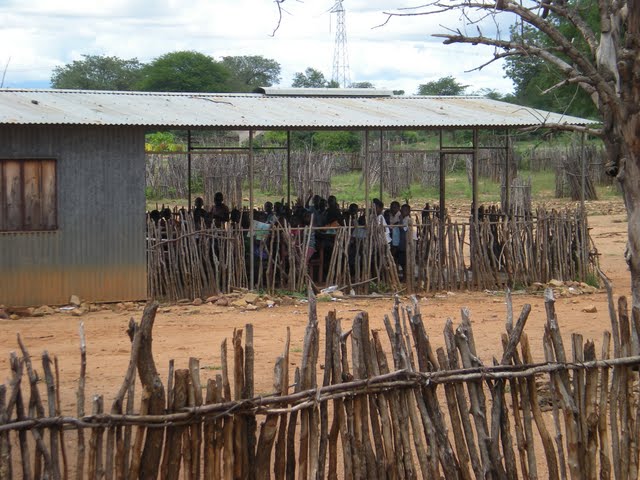Primary schools in Tete were facing so many challenges. I was able to visit many of these schools as part of the Forum for Education Partners in Tete. Besides the economic and structural difficulties, most schools were overcrowded and staff was stressed with inadequate facilities and materials. Students often came from homes where their parents had finished only a few years of school. New education policies prioritized ensuring that children were enrolled in school. The time had come to improve teaching and management of schools. When I heard about “curriculo local” as part of the national Portuguese language curriculum, I was excited. This seemed like a perfect opportunity to help children who spoke Mozambican national languages at home to have content in their own languages that reflected their own community values and knowledge.
I approached the subject with teachers and curriculum development leaders at the provincial level. “What if we provided materials written in Nyungwe for the schools to include in their “curriculo local”? I was told that usually this 20% of allotted time was used to orally summarize the lessons in Nyungwe (or another local language) for the daily lesson that was scheduled in the national curriculum. Most teachers and communities were not able to devote sufficient time and had insufficient preparation to develop full curricula to accompany the state syllabus with local components. Some committees did, in fact, produce catalogues of local language stories, songs, dances and recipes that were drawn upon in certain lessons. These were often seen as ONLY useful for the school for which they were developed and were not approved for regional use within the language area. Some educators believed that written local language was not even allowed. This was not the case, but it was assumed that local language should be oral and written language must be Portuguese as far as school was concerned.

What is there to read here?
In 2011, I decided to embark on a limited research project to determine what literature was available in the city of Tete. Having lived in the city for many years, I knew the shops that normally were seen as booksellers or school supply stores. I wanted to know what the average Tete person knew about where to get a “book”. My research method was to choose a city block with an assortment of retail and business establishments ranging from the national airline office to small hardware and grocery shops, and the national newspaper outlet. I walked into every shop on both sides of the 100 meter street and asked for “books”. I asked: Do you sell any books here? Where can I find books for sale? What about stories or novels? Do you know where those are available?
I discovered that most people named the same shops that were well known plus the provincial library. Some of the people did not know that some book shops had actually closed down in the past year. Almost no one knew the provincial library had moved to a new location on the other side of the Zambezi River. People defined books as textbooks, dictionaries and Bibles. No other kinds of books were known or even desired by most residents. Some mentioned the national newspaper office that had a few volumes by Mozambican authors. One or two knew of local authors of poetry or local history volumes. All in all, it did not seem that BOOKS or stories were a thing that people wanted to buy. These were seen as very expensive or not interesting. The library was a place that students could access text books that they did not manage to buy. No books were available to check out and take home. No shelves were accessible for browsing. Each book was catalogued in a large register and the register could be used to find and request a title and read it on location. Photocopies of material were allowed if you left your ID card at the desk and came back before the end of the day
What IS a book, anyway?
- Books were not for the average person in Tete.
- Books with interesting content to read for enjoyment were not available.
- Books were expensive and for the elite; bookshops seemed unwelcoming to the average person.
- Books were exclusively Portuguese or English language material.
- Bibles were books; they might be in a neighboring Bantu language, specifically Shona or Chewa. These were often not available to buy locally.
- Dictionaries were books; they were large, expensive volumes either in Portuguese or English/Portuguese. These were desirable, but inaccessible.
- Textbooks for all levels of the national curriculum were books. Grades 1-7 should have free materials provided at school, but sometimes they “ran out”. Grades 8-12 would have to purchase all textbooks. Private schools charged for these same textbooks.
No one felt that books “belonged” to them. No one seemed to feel that books were a part of everyday life. Books were only for school or for church.
David Ker and I came to realize that for children in Tete to grow up with meaningful reading material as a part of their community and culture, they needed local language books that were interesting and attractive and free. No one wanted to buy a book because no one knew what a book could be! They had never experienced a fun book! They had never “discovered meaning” in a Portuguese language textbook. Most had never connected deeply with a foreign language Bible either. Books were hard, expensive and “not ours”. This had to change. David was serious about helping to change the way normal people of Tete looked at reading books.